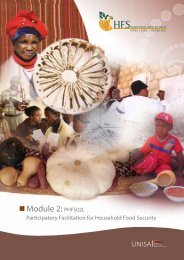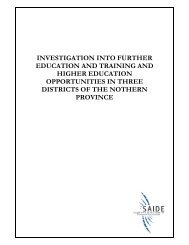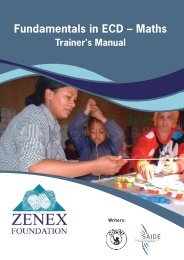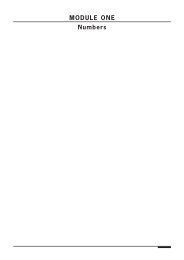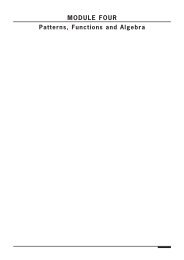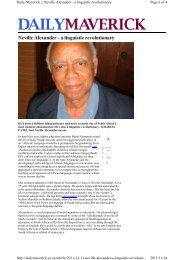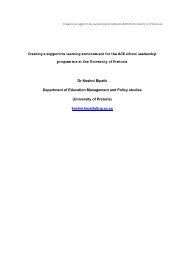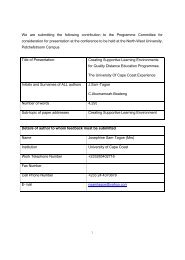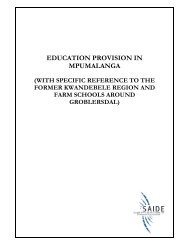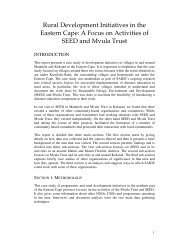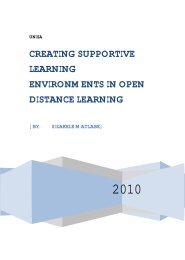Fundamentals in ECD - South African Institute for Distance Education
Fundamentals in ECD - South African Institute for Distance Education
Fundamentals in ECD - South African Institute for Distance Education
You also want an ePaper? Increase the reach of your titles
YUMPU automatically turns print PDFs into web optimized ePapers that Google loves.
<strong>Fundamentals</strong> <strong>in</strong> <strong>ECD</strong> : Mathematical LiteracyLearner’s ManualSO6:Critically analyze the development of the base ten number system. (Place value,role of 0 <strong>in</strong> our number system, patterned nature of whole numbers, history andcontestations.)1. The development and significance of zero is expla<strong>in</strong>ed.2. Understand<strong>in</strong>g of the place value of numbers is demonstrated. (Expansion ofnumbers <strong>in</strong> different ways, the value of a numerical symbol <strong>in</strong> a number.)3. The patterned nature of whole numbers and its historical development aredescribed.4. The contestations around, and use and popularisation of the decimal numbersystem are described. (Uses <strong>in</strong> economics and politics.)SO7:Analyze the relationship between rational and whole numbers.1. Demonstrations describe the <strong>in</strong>creas<strong>in</strong>g density of the system.2. Demonstrations show that whole numbers are a subset of rational numbers.3. The properties of whole numbers and rational numbers are given.SO8:Analyze the relationship between rational numbers and <strong>in</strong>tegers.1. Demonstrations describe the <strong>in</strong>creas<strong>in</strong>g density of the system.2. Demonstrations show that whole numbers are a subset of rational numbers.3. The properties of whole numbers and rational numbers are given.9. Unit Standard 7464SO1Identify geometric shapes and patterns <strong>in</strong> cultural products. (shapes of anddecorations on cultural products such as drums, pots, mats, build<strong>in</strong>gs, andnecklaces.)1. Basic trans<strong>for</strong>mations are identified. (translations, reflections and rotations.)2. Basic geometric shapes are identified.3. Basic patterns are identified and described.4. Basic patterns are extended <strong>in</strong> a way that ma<strong>in</strong>ta<strong>in</strong>s the consistency of thepattern.xxii



